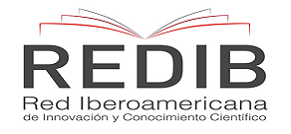Maximum strength training in squat clean for 20 to 25 year-old male athletes
Keywords:
CrossFit, Training, StrengthAbstract
The objective of this research work is the application of a periodization model of maximum strength, having a significant gain of 12% of strength as a result at the end of the 6 weeks of training. Applying a survey to the trainers, it could be evidenced that there is a lack of knowledge of basic concepts that are essential to be able to dose loads. At the end of the 6 weeks of training the results were that 30% had a gain of between 10% to 12% and 70% obtained a gain of between 5% and 8%. The successful application of this research work makes this an ideal tool for coaches and athletes. However, this same type of training has been responsible for generating the majority of injuries at the joint and lumbar level, being poorly implemented by inexperienced people who are in charge of CrossFit training, being of great importance the application of a training model with the ATR method.
Downloads
References
Agudelo, V. C. A. (2019). El modelo ATR como sistema alternativo de entrenamiento e investigación en el deporte. Uiref.
Alan, N., & Cortez, L. (2018). Procesos y fundamentos de la investigación científica. Machala-Ecuador: UTMACH.
Arias, F. G. (2012). El proyecto de investigación: Introducción a la metodología científica. Caracas: Episteme C.A.
Costa, F., Feye, A. S., & Magallanes, C. (2021). Efectos del entrenamiento de sobrecarga tradicional vs CrossFit sobre distintas expresiones de la fuerza. Retos, 7, 123-134.
Emidio, P., David, E. K., Totten, L., & Miller, D. (2012). Un mesociclo periodizado de ocho semanas preparatorio para una competencia de halterofilia de nivel nacional. Grupo sobre Entrenamiento.
Fernández, J. M., Morocho, E. K., Poroso, C. H., & Santiago Ortiz, S. (2022). Metodología del entrenamiento para el desarrollo de la fuerza explosiva en el deporte de alto rendimiento. Guayaquil: Crisálidas.
Fernández, J. M., Morocho, E. K., Poroso, C. H., & Sevilla, J. S. (2022). Metodología del entrenamiento para el desarrollo de la fuerza explosiva en el deporte de alto rendimiento. Guayaquil: Crisálidas.
Flick, U. (2012). Introducción a la investigación cualitativa. Madrid: Ediciones Morata.
Marchante, D. (2022, October 23). Power explosive. Obtenido de https://www.casadellibro.com/libros-ebooks/david-marchante/20099443
Medina, K. (2015). Influencia de la fuerza máxima en la fuerza explosiva. EFDeportes.
Mosteiro-Muñoz, F., & Domínguez, R. (2017). Efectos del entrenamiento con sobrecargas isoinerciales sobre la función muscular. Revista Internacional de Medicina, Ciencias de la Actividad Física y Deportes, 17(68), 757-773.
Núñez, C. A., Crichton, J. P., Álvarez, M. M., Arancibia, J. O., & Sepúlveda, R. Y. (2022). Efectos del entrenamiento con movimientos de halterofilia en el rendimiento de esprint, salto y cambio de dirección en deportistas: Una revisión sistemática. Retos, 13, 123-134.
Paula Chica, M. G. (2012). Estrategia pedago?gica para la formacio?n integral de los ciclistas de alto rendimiento deportivo en Guayaquil- Ecuador. Editorial Universitaria.
Peña Fernández, J. M., & Aguilar Morocho, E. K. (2022). Metodología del entrenamiento para el desarrollo de la fuerza explosiva en el deporte de alto rendimiento. Guayaquil: Fundación Editorial Crisáli.
Ricardo L, S. (2021). Efectos de los protocolos de entrenamiento de fuerza máxima de 4, 8 y 12 repeticiones sobre el volumen y la fuerza muscular. Grupo Sobre Entrenamiento.
Sabino, C. (1992). El proceso de la investigación. Caracas: Panapo.
Sampieri, H. R. (2010). Metodología de la investigación. México: McGraw-Hill.
Sampieri, R. H., Collado, C. F., & Lucio, P. B. (2010). Metodología de la investigación. México D.F.: McGraw-Hill / Interamericana Editores, S.A. DE C.V.
Valbuena García, R. (2007). Evaluación y normas para la clasificación de la capacidad física "flexibilidad" considerando personas entre 9 y 50 años de edad pertenecientes al Distrito Capital de la ciudad de Caracas. Scielo, 61, 123-135.
Downloads
Published
How to Cite
Issue
Section
License
Copyright and Licensing
For all articles published in Atena Journals, copyright is retained by the authors. Articles are licensed under an open access Creative Commons CC BY 4.0 license, meaning that anyone may download and read the paper for free. In addition, the article may be reused and quoted provided that the original published version is cited. These conditions allow for maximum use and exposure of the work, while ensuring that the authors receive proper credit.
Reproducing Published Material from other Publishers
It is absolutely essential that authors obtain permission to reproduce any published material (figures, schemes, tables or any extract of a text) which does not fall into the public domain, or for which they do not hold the copyright. Permission should be requested by the authors from the copyrightholder (usually the Publisher, please refer to the imprint of the individual publications to identify the copyrightholder).
Permission is required for:
- Your own works published by other Publishers and for which you did not retain copyright.
- Substantial extracts from anyones' works or a series of works.
- Use of Tables, Graphs, Charts, Schemes and Artworks if they are unaltered or slightly modified.
- Photographs for which you do not hold copyright.
Permission is not required for:
- Reconstruction of your own table with data already published elsewhere. Please notice that in this case you must cite the source of the data in the form of either "Data from..." or "Adapted from...".
- Reasonably short quotes are considered fair use and therefore do not require permission.
- Graphs, Charts, Schemes and Artworks that are completely redrawn by the authors and significantly changed beyond recognition do not require permission.
Obtaining Permission
In order to avoid unnecessary delays in the publication process, you should start obtaining permissions as early as possible. If in any doubt about the copyright, apply for permission. Atena Journals cannot publish material from other publications without permission.
The copyright holder may give you instructions on the form of acknowledgement to be followed; otherwise follow the style: "Reproduced with permission from [author], [book/journal title]; published by [publisher], [year].' at the end of the caption of the Table, Figure or Scheme.














